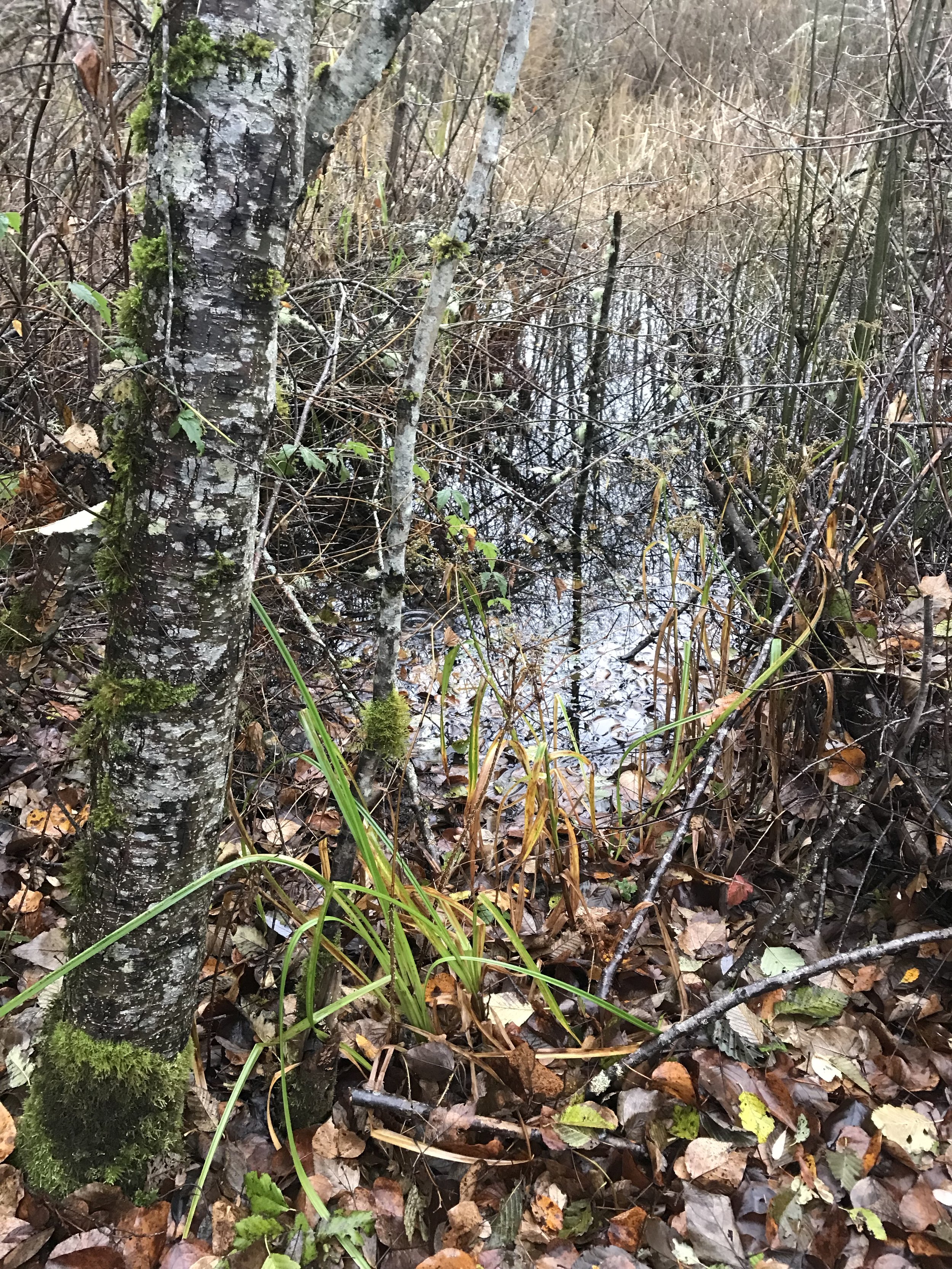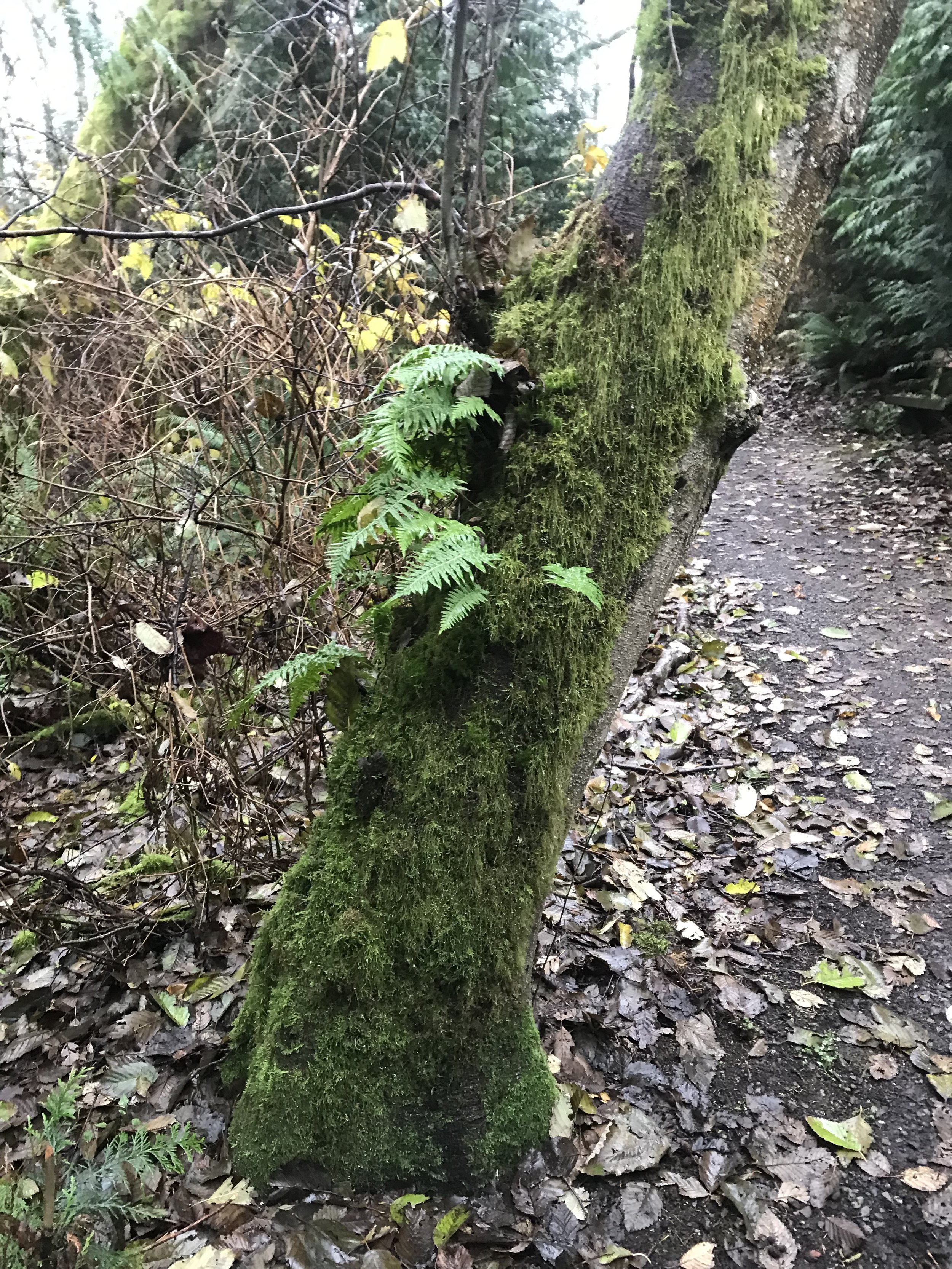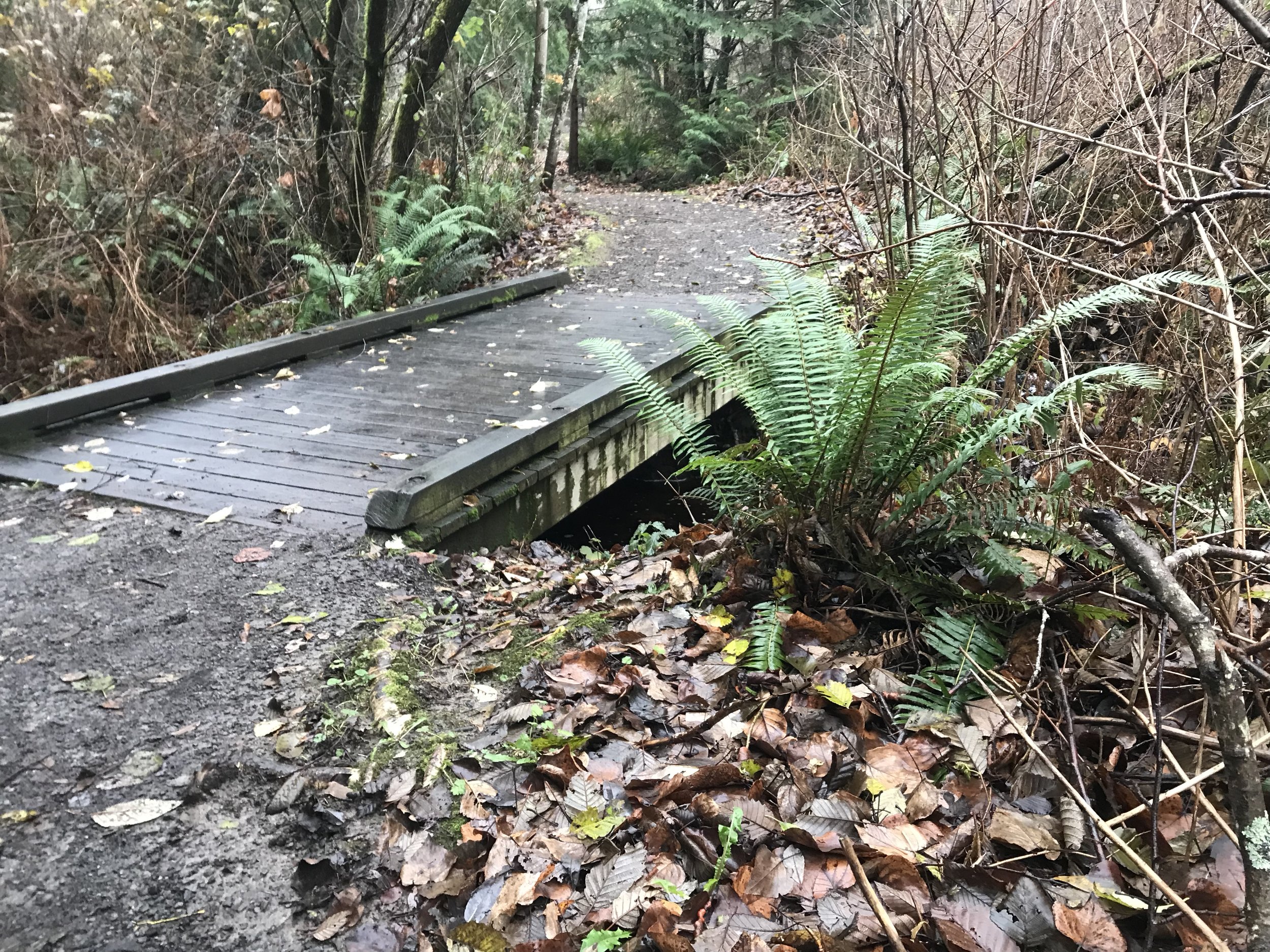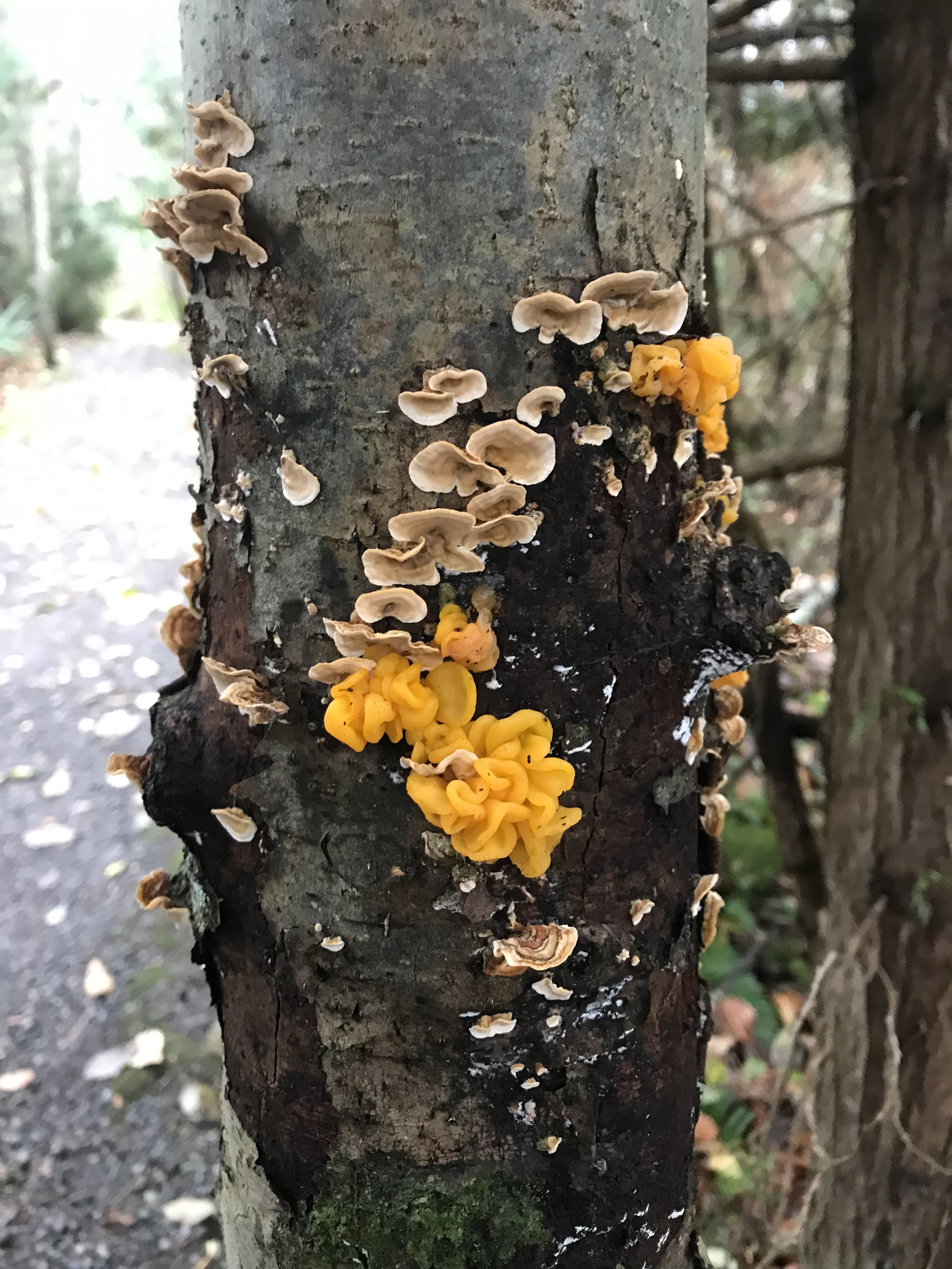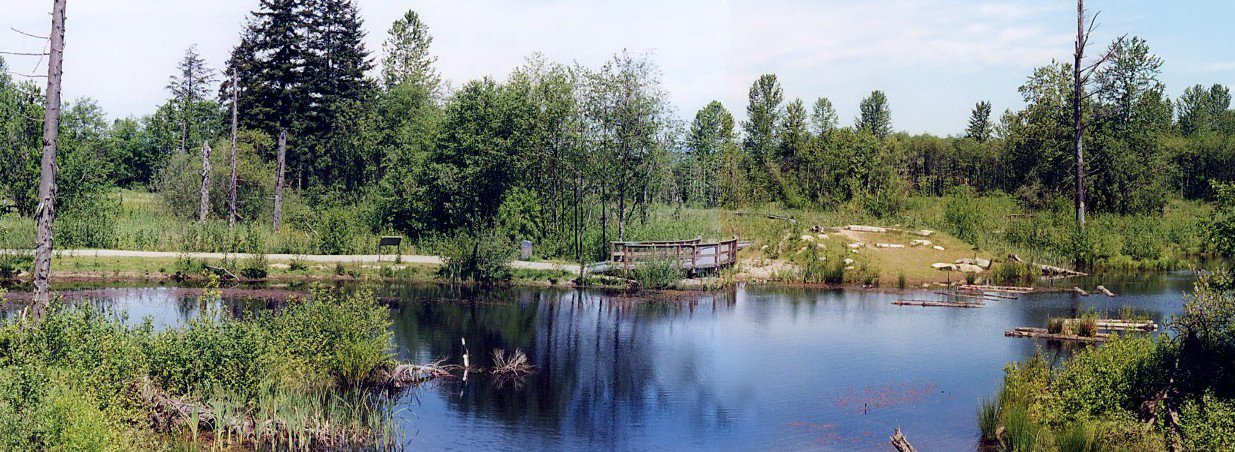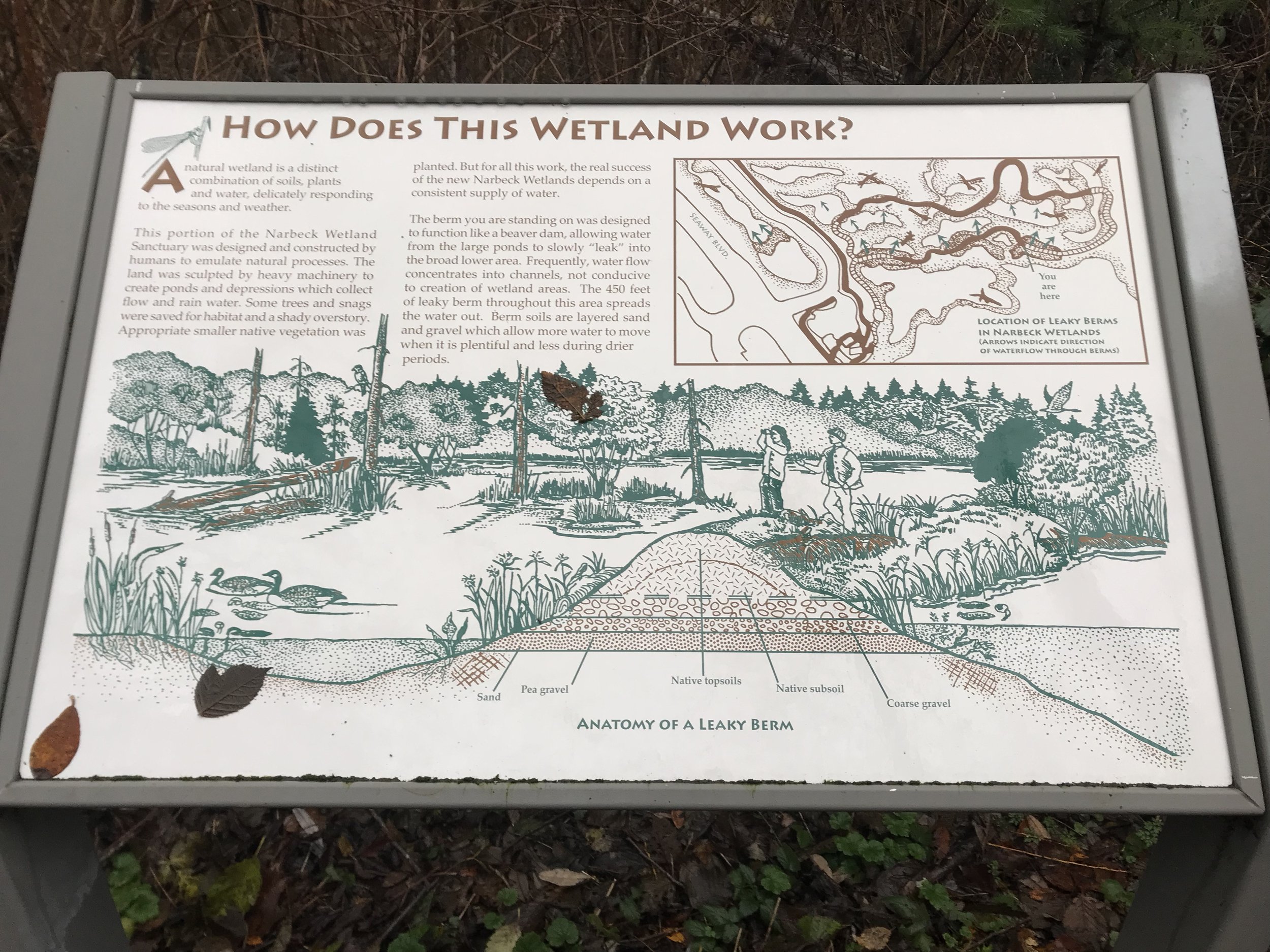by Angela Mele
Narbeck Wetland Sanctuary a few years after construction, in 2002.
As an interpretive planner and scientific illustrator, the relationship between humans and their environment is the focal point of my profession. As a new member of The Watershed Company (Watershed), the company tagline, balancing the interests of people and nature, sounded wonderful—but a bit intangible—until I visited one of our project sites. I was delighted to join landscape designer, ecologist, and certified arborist Roen Hohlfeld at the Narbeck Wetland Sanctuary, a restored wetland complex just northeast of Paine Field in Everett, WA.
Designed in 1998, the 48-acre Narbeck site is a special example of how we plan for the interests of both people and nature. The restoration effort was a cooperation between the Snohomish County Airport, local citizens and governments, regulatory agencies, and businesses (an unusual and innovative arrangement at the time). It was also the first mitigation bank in Washington state. (The EPA describes a mitigation bank as “a wetland, stream, or other aquatic resource area that has been restored, established, enhanced, or preserved for the purpose of providing compensation for unavoidable impacts to aquatic resources.”)
To compensate for unavoidable losses resulting from runway safety improvements, Watershed created eight new acres of wetlands and preserved and enhanced another 14 acres of wetland buffers. The effort also enabled the airport to expand further sustainably, while creating acres of passive recreation area.
Mitigation: the process of becoming milder, gentler, or less severe.
The wetlands under construction in 1998.
A few years later, airplane passengers looked down at ponds and forests filled with life.
Narbeck is not a quiet, distant wilderness. The smell of an industrial coffee roasting session permeated our journey, the interstate hummed alongside birdsong, and two weeks after Thanksgiving we came upon a spookily intact cake that read “Happy Halloween!”. If anything, this park highlights the contrast—and the potential for co-existence—between inevitable development and the watery, self-sustaining ecosystems that long supported Indigenous communities and wildlife throughout the region.
“At Narbeck we do a very human-centric kind of monitoring. We’re looking not just at ecological elements like plant cover, but also at the built infrastructure: is there graffiti, are there maintenance issues, are people cutting trails? This combination of a passive recreation facility and wildlife sanctuary was really visionary for its time.”
— Roen Hohlfield, Ecological Designer
So, which of Narbeck’s many watery features did our company preserve, enhance, and build nearly from scratch in 1998? Passing by a sculpted berm or through the sudden darkness of a cedar grove, one can imagine scientists and designers merging minds and sketches to bring their vision of a thriving urban wetland to fruition. There are also a number of fabulously retro interpretive signs that point out which areas were carefully cultivated. If you head to Narbeck, look for these six landscape features that were spawned from a convergence of art and science.
1. The land was sculpted by heavy machinery to create ponds and depressions which collect flow and rainwater.
Narbeck under construction in 1999.
2. Trees were saved for habitat and a shady overstory.
Some salvaged trees appear so significant that people have built a path to visit them. The log “bridge” at bottom left may need to be replaced with thorny salmonberries to make this Douglas-fir appear more off-limits.
3. Leaky berms—raised layers of sand and gravel that let pondwater slowly leak out and inundate surrounding land—were designed and installed. The landscape architects used beaver dams as inspiration.
This classic 90s interpretive sign lays out the “anatomy of a leaky berm”.
4. Native vegetation was planted, and aggressive non-natives like purple loosestrife were removed.
Roen knows all the plants’ names and their roles in the ecosystem. Here, he shows me some tall bracken fern that provides refuge for small critters.
Purple loosestrife is a noxious weed that we kept an eye out for. (Photo by Ivar Leidus)
5. Snags—dead, standing trees that are home to many animals—were protected and installed.
A raptor peers out from a snag a few years after it was installed. A typical monitoring session includes snapping such photos of animals interacting with the environment.
6. One area was designed to provide breeding habitat for frogs and other amphibians. The interpretive sign reads, “Sections of the shoreline were constructed at just the right water depth and planted with vegetation that amphibians attach their egg-masses to. Larger cover plants give protection from sun and winds during incubation.”
A Watershed staff member holds a frog he found a few years after Narbeck opened.
So, how’s the site holding up 23 years after it was designed? Between my numerous inquiries (“What’s this plant?” “What’s the craziest thing you’ve ever found on a site visit?”) and my abrupt stops at every interpretive sign, Roen was able to address this real question—the point of his monitoring session. He had me document a few things: a bit of lingering purple loosestrife, graffiti on a bench, and a new bridge that is successfully preventing erosion on part of the trail. But overall, Roen thought that things were growing as planned without too much negative human intervention. Here’s his assessment:
“Everything continues to develop according to plan. There are a few invasives that need to be dealt with, but overall the site is in good shape and continues to function as intended.”
Roen strolls past alders, which he explained are a pioneer species that fix nitrogen to help the forest grow.
Stormwater outfall from the adjacent neighborhood was eroding this part of the trail, so Watershed recommended that this bridge be installed to help keep things intact. It’s doing its job.
As Roen and I trotted along the boardwalk, chatting about Narbeck’s original design intentions and how they’re holding up today, I saw how my company has immersed people in the beauty of convergent natural and human systems since 1982. We truly re-imagine landscapes as places where long-term ecological health, urban development, and strong human connections with nature can co-exist. The “visitor experience” is shaped in a genuine way by what’s happening in the landscape that day, and the landscape is shaped by our team of architects, scientists, artists, planners, and designers.
I see my role as the environmentally-friendly glue that merges interpretive artworks, narratives, and other media with the bigger picture of a landscape, its history, and my teammates’ plans to sculpt it for future growth.
